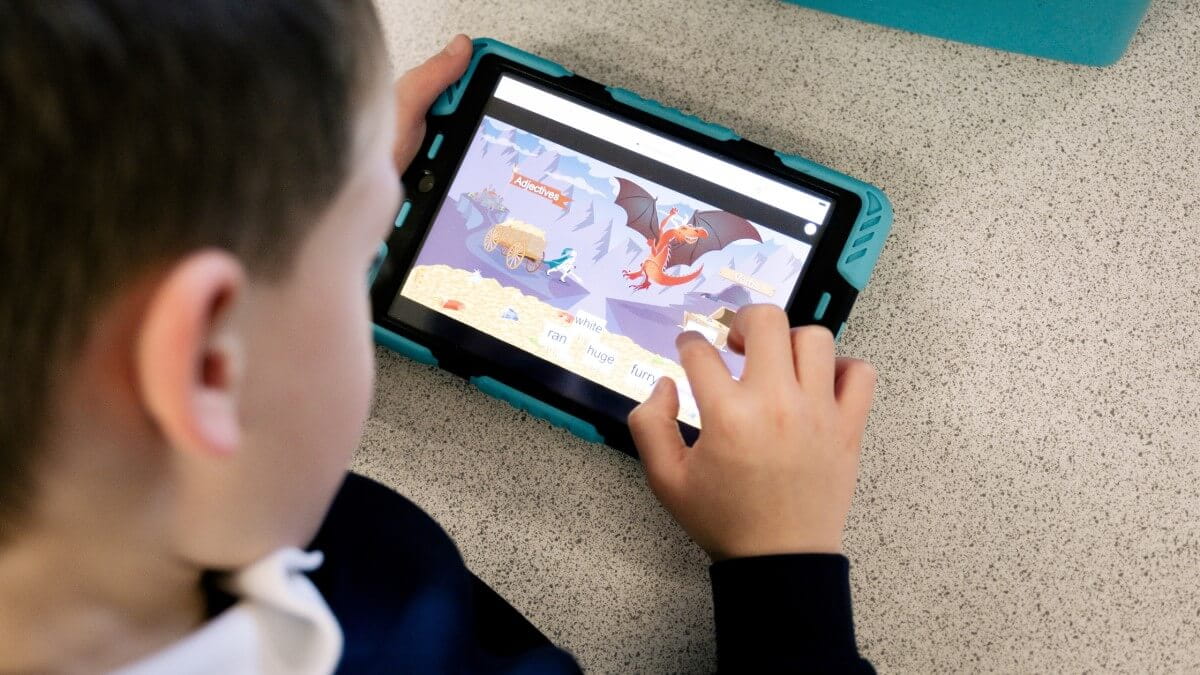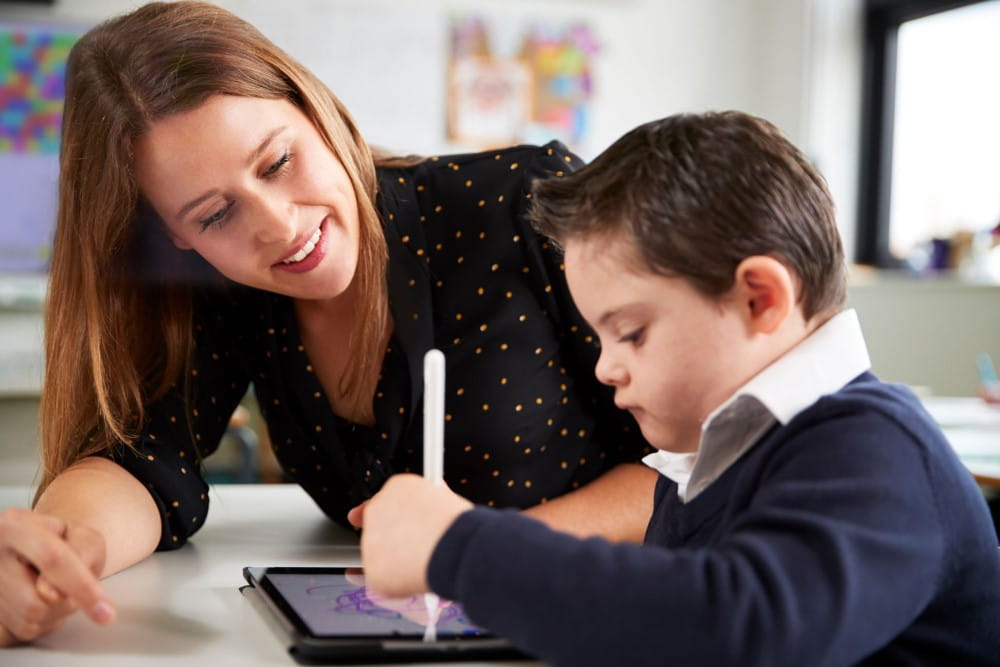While many teachers have seen first-hand how an inclusive classroom benefits diverse learners, it can be challenging to customize lesson content for every student without the right resources.
“Often a curriculum will provide teachers with suggestions to adapt lessons to offer a bit more or less information,” says Anna Tansey, Education Sales Consultant with SMART Technologies and former special education teacher. “But it might be a sentence or two of instruction and not enough to truly address accessibility.”
Creating accessible content with the right technology allows teachers to offer a variety of ways for students to engage with the material they present in class.
The benefits are exponential. All students learn better in inclusive classrooms, according to Inclusive Education Canada.
In this article on creating accessible content for diverse learners, we’ll explore:
- The basic principles of building accessible content
- How accessible content supports inclusion in the classroom
- Classroom must-haves: technology to support accessibility goals
- How creating accessible content amplifies inclusive classroom benefits
What are the basic principles of building accessible content?
Accessible content allows teachers to deliver lessons to all learners with ways for them to take in the material and build their knowledge. A typical curriculum won’t have this differentiation for teachers, so they often create it themselves.
“It often falls to teachers to offer additional support,” says Glen Harrington, International Software Manager at SMART Technologies and former special education teacher. “Giving them confidence, guidance, and tools is important.”
Relying on broader accessibility guidelines can also be useful. There are principles from Universal Design for Learning (UDL) that are helpful and Web Content Accessibility Guidelines (WCAB) that are well-recognized.
“These are useful guidelines that any educator can go back to,” says Tansey. “The principles may only be touched on briefly in training, but other resources exist to help guide teachers.”
Providing accessible learning content allows students to share what they know in different ways, ensuring their abilities and achievements can be seen and measured.
How accessible content supports inclusion in the classroom
Accessible content helps ensure classroom teaching caters to as many needs as possible, allowing more students to learn together in a shared environment without separating diverse learners.
“Education about the individuals who require additional support is important,” says Harrington. “And then finding that software or support that can cover the majority of needs.”
The least restrictive environment (LRE) special education approach encourages keeping kids in the same classroom as much as possible, then adding accommodations to boost success.
The guiding principle of LRE special education is to create learning opportunities with as much inclusion as possible.
Creating accessible content allows students to collaborate and participate at a level that aligns with their abilities without being separated from their peers.
Teachers can add and adapt lessons in real time to ensure all learners can understand and engage with the content.
“It’s important that teachers can trial new tools to see how they fit,” says Harrington. “Accessibility and adoption matter. Teachers need support from providers to help guide them and students in how to get the most out of your resources.”
Classroom must-haves: technology to support accessibility goals
Traditional teaching methods include a teacher creating and delivering lesson plans in a single format, likely best suited for one type of learner.
Classroom tools such as Lumio allow teachers to import the lessons they already use and enhance them with customized components to suit the individual needs of their students. Lumio provides games, collaborative workspaces, and manipulatives students can physically handle to keep kids motivated and actively learning.
“The beauty of Lumio is that it is very flexible,” says Harrington. “It will work on any device with a browser, so students can use it with the hardware they already use.”
With Lumio, learning is presented in multiple modalities, adapting to the learner to help ensure new knowledge is absorbed, understood, and remembered.
“As Lumio is built and outfitted with new features, UDL is always considered,” says Tansey. “It’s a holistic approach to learning with a focus on including accessibility features.”
For example, a teacher can present a lesson with slides and then offer the information in a game. Later, they can reinforce the lesson by allowing students to engage with the software through manipulatives or another physical response.
“Lumio is very intuitive and easy for teachers to create multiple resources very quickly,” says Harrington.
While students engage with the content in multiple ways, audio from the teacher can be played and replayed for learners who may need instructions repeated more than once for best comprehension.
With robust technology options, teachers can accommodate more learners by using features that allow more students to engage with the lesson — regardless of obstacles. The focus is on inclusion and removing barriers for all students.
“I’ve seen teachers support students with hearing and vision impairments by using the zoom feature and high-contrast backgrounds to suddenly bring the lessons right to them in a way they could engage,” says Tansey. “On the other hand, I’ve also had students excited to access lessons in Arabic with Lumio’s Immersive Reader.”
How creating accessible content amplifies inclusive classroom benefits
Lumio offers another layer of value to educators who care deeply about reaching learners effectively. Built-in analytics provide data on student usage, engagement, trials, and success, allowing teachers to understand how students learn and what approaches work best for each.
“Lumio enables teachers to see the time a student spent engaged in an activity, how many answers they got right, but also how many times they went back to try again,” says Harrington.
Inclusive classrooms benefit everyone, from teachers to diverse learners and their peers, with positive impacts from every improved learning outcome.
“We use these universal practices as a base level,” says Tansey. “We use them because we know almost everyone can benefit if we do that from the beginning.”
Accessible learning content can ensure classrooms meet the needs of students even before they are identified as diverse learners, helping deliver positive outcomes for all students.
“We may even see rewards down the road with fewer students identified as having diverse needs in third, fourth, or fifth grade,” says Tansey. “This could translate to better test scores and help protect the joy of going to school that they might otherwise lose.”


